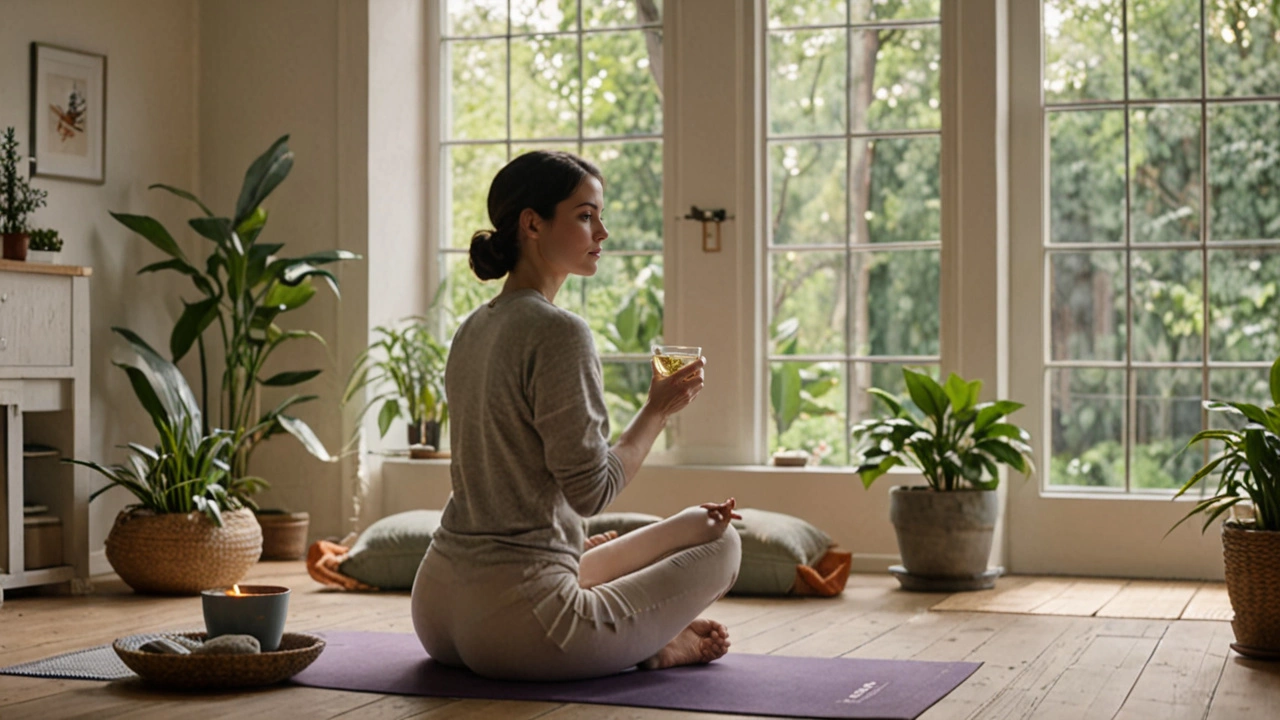You don’t need a full hour or fancy gear to reset. A few practical techniques — done the right way — can cut stress, clear your head, and help you sleep. Below are straight-to-the-point methods you can use at work, home, or before bed.
Box breathing (4-4-4-4): inhale for 4 seconds, hold 4, exhale 4, hold 4. Do this for 1–3 minutes when you feel tense. It slows your heart rate and gives your brain a break without needing silence or a cushion.
Grounding 5-4-3-2-1: name 5 things you see, 4 you can touch, 3 you hear, 2 you smell, 1 you taste. This brings attention out of rumination and into the present in under a minute.
Progressive muscle release: tense a muscle group for 5 seconds, then fully relax for 10. Move from feet to face. It’s great when anxiety lives in your body — neck, shoulders, jaw.
2-minute body scan: close your eyes and move attention slowly from toes to head. Notice sensations without judgment. Use it before meetings or bedtime to drop mental chatter.
Biofeedback basics: small wearable sensors show your heart rate or skin conductance. Use them to learn which actions lower your stress in real time. Start by pairing breathing with the feedback — watch the number fall and you’ll learn what works for you.
Mindful eating trick: before a snack, pause for one deep breath and name the hunger level on a scale of 1–10. If it’s under 4, wait 10 minutes and drink water. This prevents automatic snacking and builds awareness over time.
Self sports-massage tips: use a tennis ball against a wall or floor to roll out tight calves, glutes, or shoulder blades. Spend 1–2 minutes per spot. It helps blood flow and speeds recovery after runs or long desks sessions.
Creative quick fix: sketch a shape for 3 minutes with no goal, or play a 2-minute melody. Short creative moves shift brain mode from fight-or-flight to exploratory, which lowers cortisol and sparks calm.
Match the tool to the need: use breathing for instant calm, progressive release for body tension, grounding for panic, biofeedback to train long-term control, and light creative or massage work for recovery. Try one technique daily for a week and notice which sticks. Small, consistent practice beats rare grand gestures.
Want ideas tailored to your day? Pick where you struggle most — sleep, focus, or stress spikes — and use two techniques from above until they feel automatic. That’s where change actually happens.

Explore various relaxation techniques that help you achieve mindfulness and inner peace. This article shares effective and simple methods to combat stress, improve mental health, and enhance overall well-being. Learn the benefits of practices such as deep breathing, meditation, and visualization to lead a peaceful life.
Read More